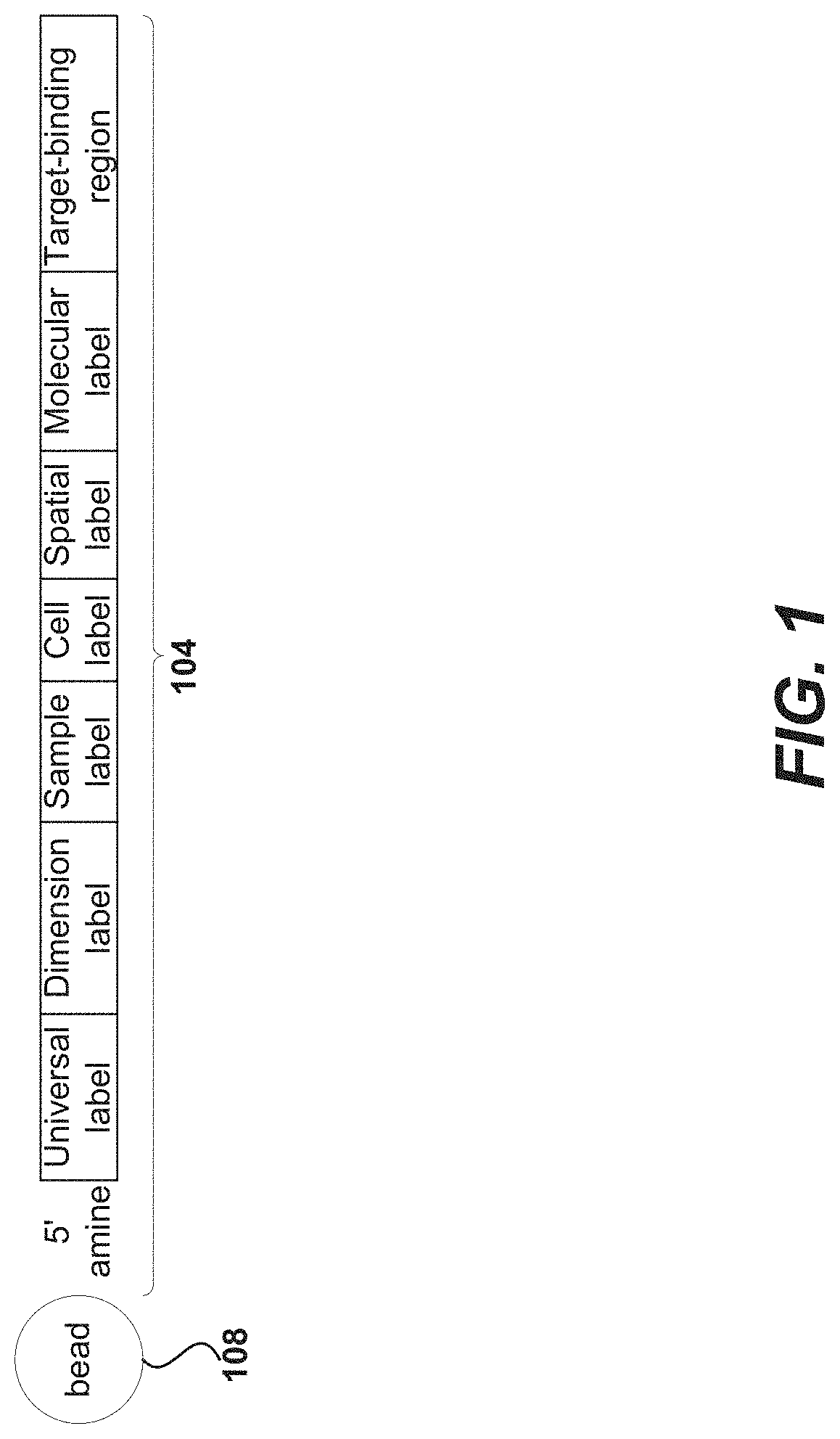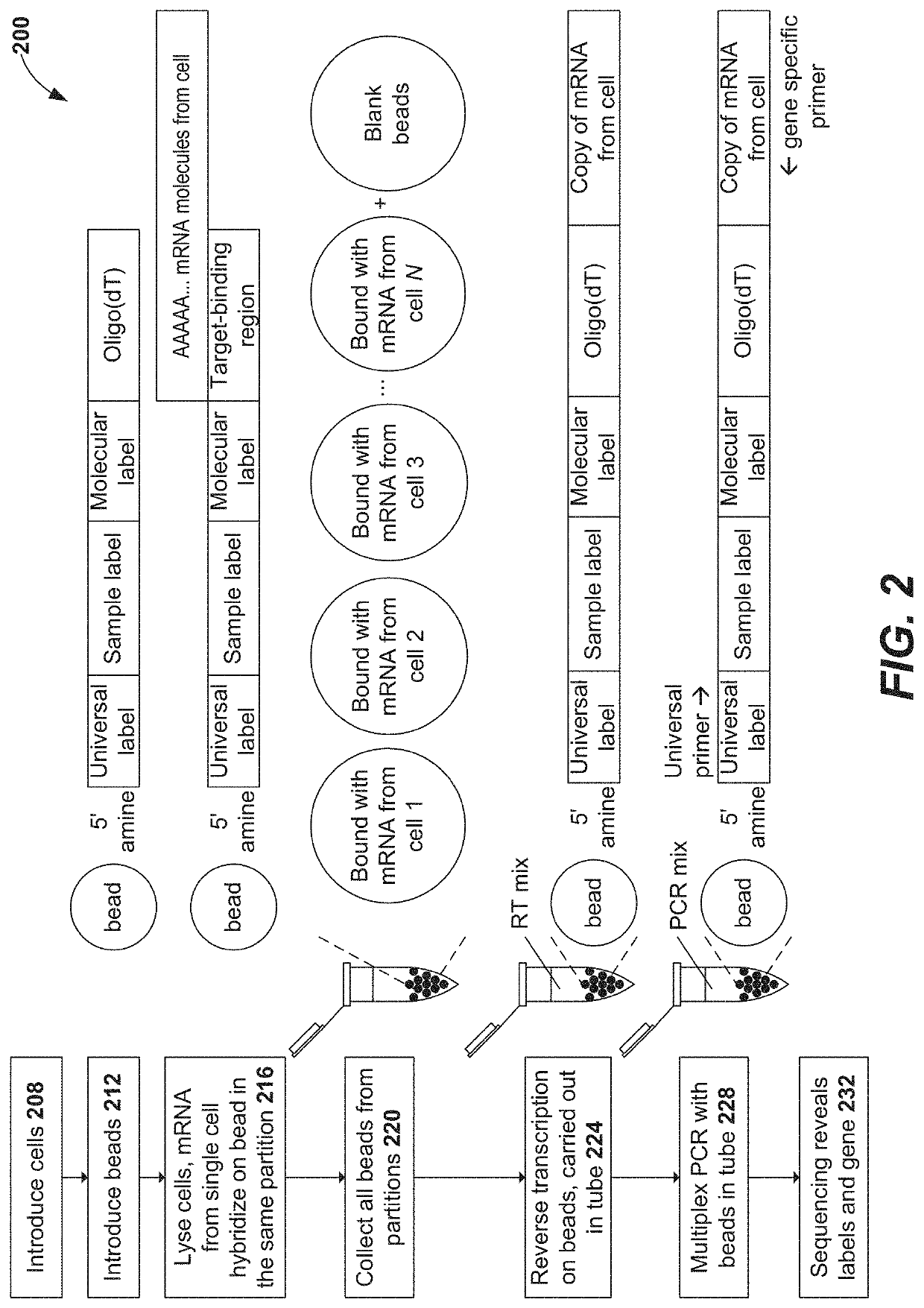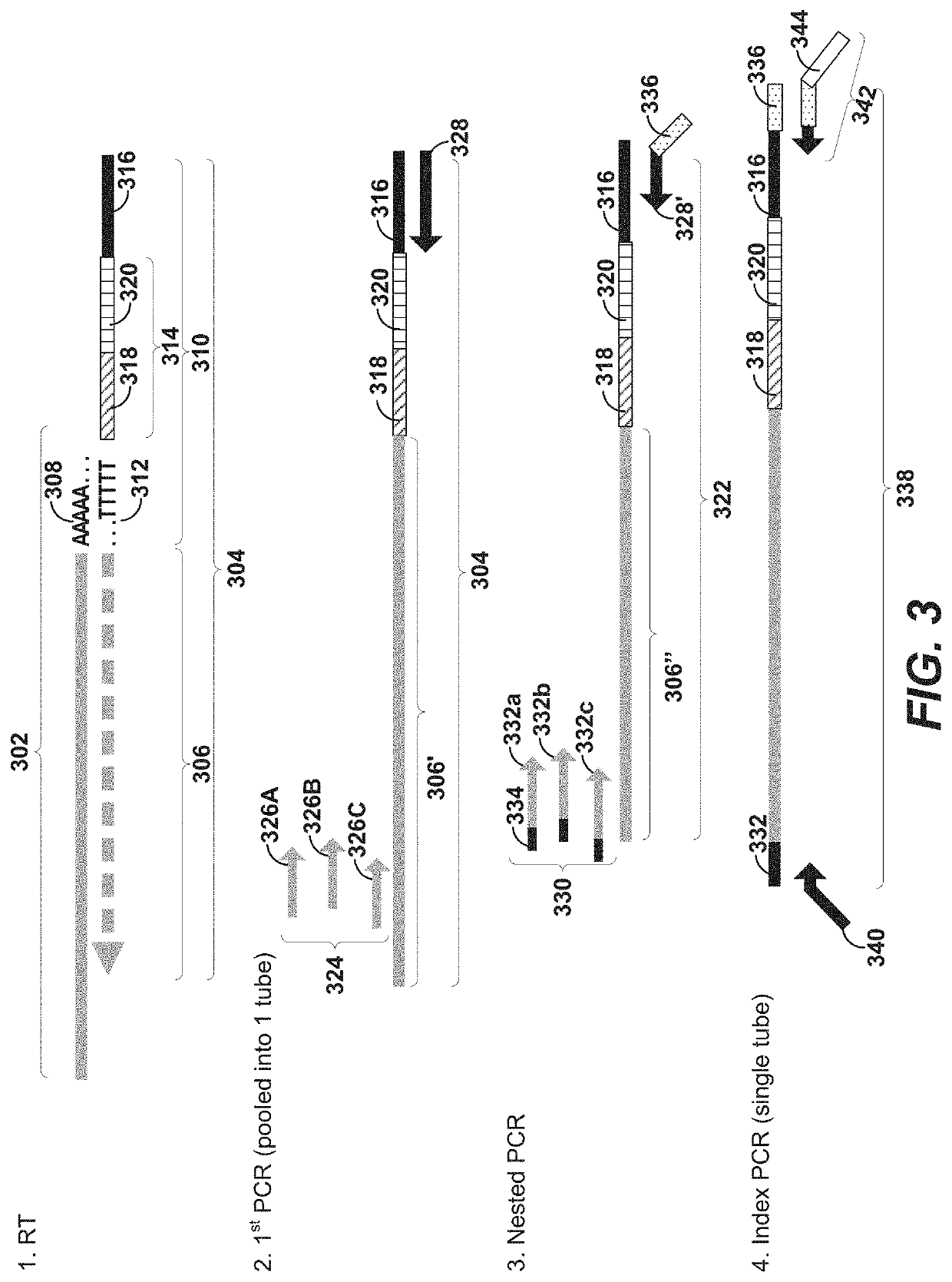Using random priming to obtain full-length v(d)j information for immune repertoire sequencing
a technology of immune repertoire and random priming, applied in the field of molecular biology, can solve problems such as the disruption of synthesized particles
- Summary
- Abstract
- Description
- Claims
- Application Information
AI Technical Summary
Benefits of technology
Problems solved by technology
Method used
Image
Examples
example 1
Random Priming-Based Determination of Full-Length V(D)J Sequences
[0304]This example demonstrates the random priming-based methods for full-length expression profiling of nucleic acid targets (e.g., V(D)J-containing transcripts) provided herein. As seen in the bioanalyzer traces of TCR products (FIGS. 10A-10B) and BCR products (FIGS. 10C-10D), smaller fragments are obtained with a random-priming based approach provided herein (FIGS. 10A and 10C) as compared to a currently available method (FIGS. 10B and 10D). Next, sequencing was performed to determine the percentage of VDJ sequences that are full-length (FIG. 11B) and come from cells (FIG. 11A). Of the reads that aligned to VDJ, were successfully assembled into a contig, and that contig is a valid VDJ sequence (has CDR3), the percentage shown in FIG. 11A relates to the number of those reads that come from putative cells. In putative cells, for the contigs that were identified as dominant, the percentage of them that are full-length ...
PUM
| Property | Measurement | Unit |
|---|---|---|
| Tm | aaaaa | aaaaa |
| diameter | aaaaa | aaaaa |
| pH | aaaaa | aaaaa |
Abstract
Description
Claims
Application Information
 Login to View More
Login to View More - R&D
- Intellectual Property
- Life Sciences
- Materials
- Tech Scout
- Unparalleled Data Quality
- Higher Quality Content
- 60% Fewer Hallucinations
Browse by: Latest US Patents, China's latest patents, Technical Efficacy Thesaurus, Application Domain, Technology Topic, Popular Technical Reports.
© 2025 PatSnap. All rights reserved.Legal|Privacy policy|Modern Slavery Act Transparency Statement|Sitemap|About US| Contact US: help@patsnap.com



